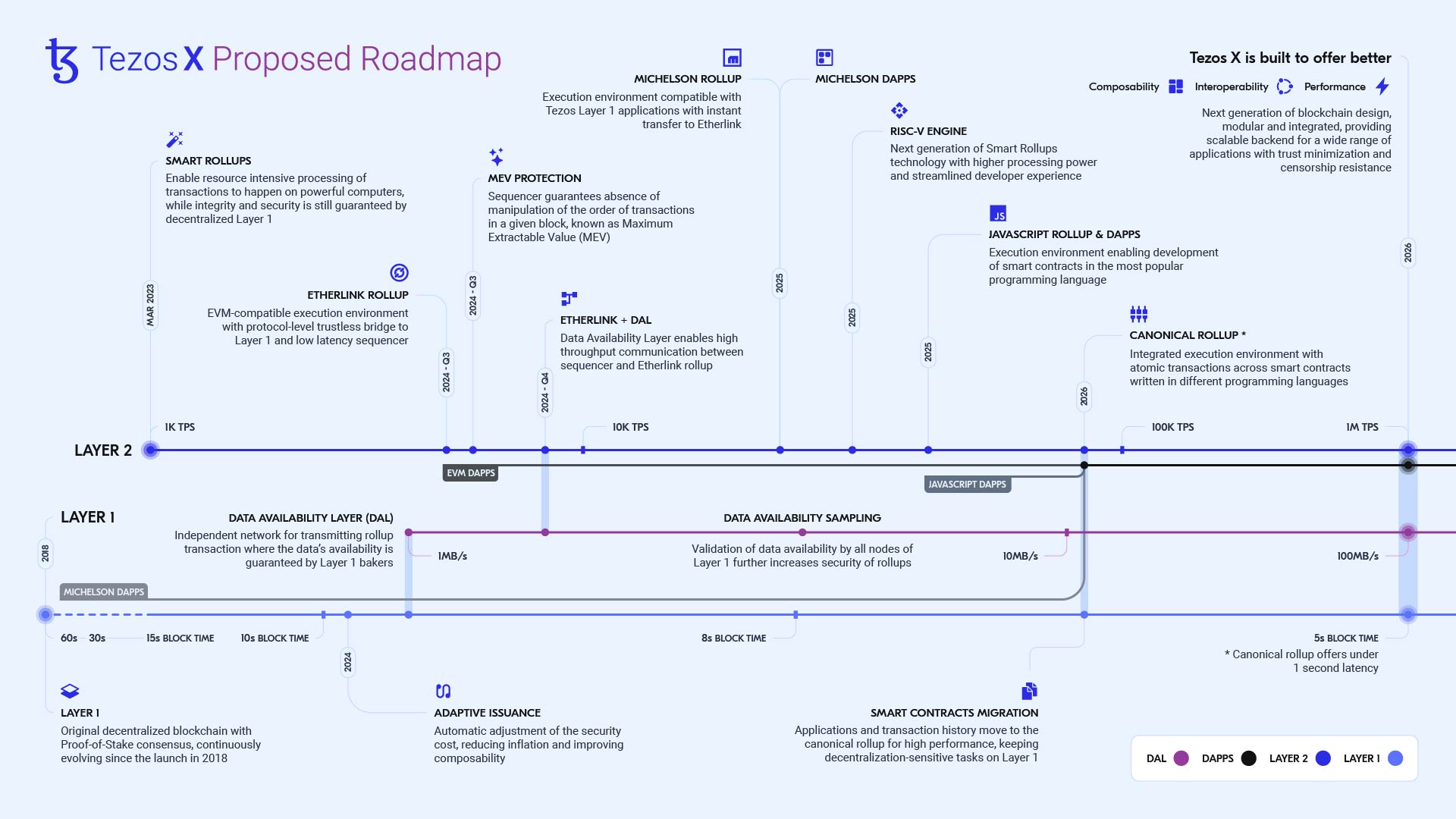According to a blog post by the developers, Tezos X is envisioned as a transformative evolution of the original Tezos blockchain. When fully implemented, this upgrade promises an integrated blockchain ecosystem featuring improved performance, composability, and interoperability.
Tezos X: The Future of Tezos
Tezos is a smart contracts blockchain platform that launched in 2017 following a $232 million initial coin offering (ICO). Despite not reaching its initial high expectations, the project remains under active development.
The new vision for Tezos is to transition from a monolithic blockchain, where each node replicates all data, to a fully modular design offering an integrated user experience. This “modu-lithic” approach ensures high decentralization, with specialized modules facilitating efficient interactions for various user groups.
With Tezos X, accounts, applications, and transaction history will migrate to a “canonical rollup,” allowing the layer-1 chain to focus solely on consensus and settlement. This will enable faster operations without the need for powerful hardware to secure the network.
“This modular approach not only boosts on-chain performance but also enhances Tezos' composability and interoperability,” the developers stated.
Tezos X Development Timeline
Work on scaling Tezos began in early 2022 with Smart Rollups, a technology designed to optimize transaction execution on a dedicated second layer, while the L1 layer ensures consensus and settlement.
By offloading transaction and computation processing from L1, the blockchain will experience significantly lower latency and faster speeds. This also allows bakers to secure the network using low-spec hardware, maintaining decentralization.
A crucial component of this upgrade is the Data-Availability layer, which enables the Tezos mainnet to manage large volumes of data from rollup users in a decentralized manner.
Tezos X aims to have a single canonical rollup handling all network activities, with the rollout expected to continue through 2026.










